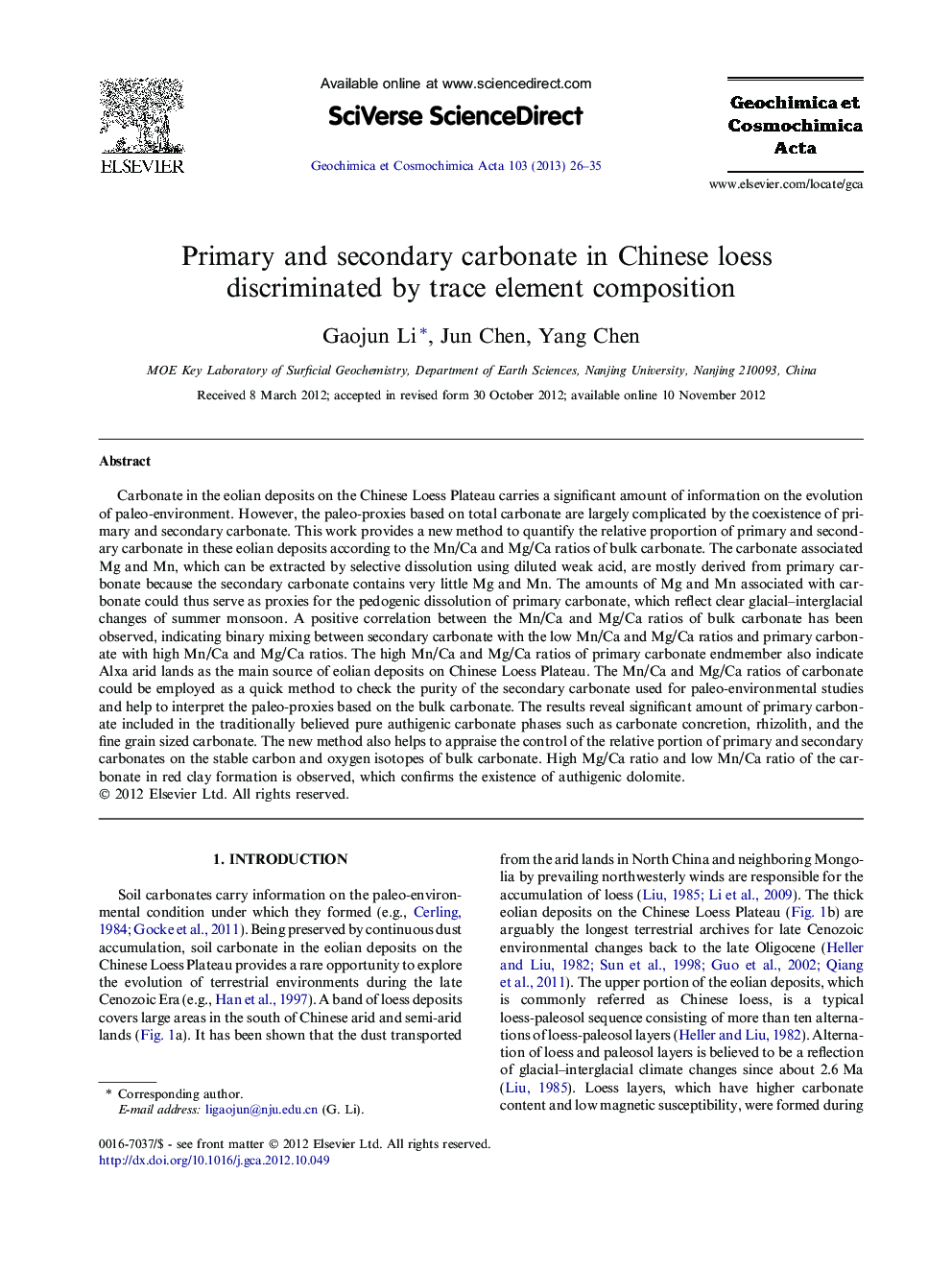| Article ID | Journal | Published Year | Pages | File Type |
|---|---|---|---|---|
| 4702499 | Geochimica et Cosmochimica Acta | 2013 | 10 Pages |
Carbonate in the eolian deposits on the Chinese Loess Plateau carries a significant amount of information on the evolution of paleo-environment. However, the paleo-proxies based on total carbonate are largely complicated by the coexistence of primary and secondary carbonate. This work provides a new method to quantify the relative proportion of primary and secondary carbonate in these eolian deposits according to the Mn/Ca and Mg/Ca ratios of bulk carbonate. The carbonate associated Mg and Mn, which can be extracted by selective dissolution using diluted weak acid, are mostly derived from primary carbonate because the secondary carbonate contains very little Mg and Mn. The amounts of Mg and Mn associated with carbonate could thus serve as proxies for the pedogenic dissolution of primary carbonate, which reflect clear glacial–interglacial changes of summer monsoon. A positive correlation between the Mn/Ca and Mg/Ca ratios of bulk carbonate has been observed, indicating binary mixing between secondary carbonate with the low Mn/Ca and Mg/Ca ratios and primary carbonate with high Mn/Ca and Mg/Ca ratios. The high Mn/Ca and Mg/Ca ratios of primary carbonate endmember also indicate Alxa arid lands as the main source of eolian deposits on Chinese Loess Plateau. The Mn/Ca and Mg/Ca ratios of carbonate could be employed as a quick method to check the purity of the secondary carbonate used for paleo-environmental studies and help to interpret the paleo-proxies based on the bulk carbonate. The results reveal significant amount of primary carbonate included in the traditionally believed pure authigenic carbonate phases such as carbonate concretion, rhizolith, and the fine grain sized carbonate. The new method also helps to appraise the control of the relative portion of primary and secondary carbonates on the stable carbon and oxygen isotopes of bulk carbonate. High Mg/Ca ratio and low Mn/Ca ratio of the carbonate in red clay formation is observed, which confirms the existence of authigenic dolomite.
